Étiquette : Bande/Tape
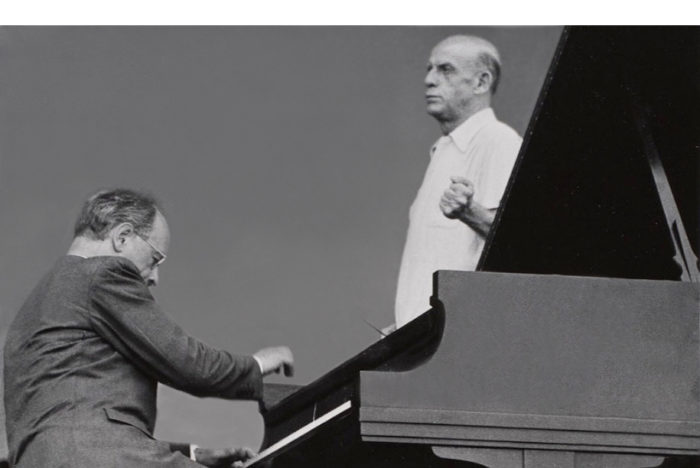
Rudolf Serkin – Dimitri Mitropoulos NYPO
Carnegie Hall – 31 octobre 1948 – Violoncelle solo: Leonard Rose
Source: Bande/Tape 38 cm/s / 15 ips
Entre le Concert du 20 février 1936 (Beethoven Concerto n°4 Op.58 & Mozart Concerto n°27 K.595 avec Arturo Toscanini) et le « Rudolf Serkin Golden Jubilee Program » du 20 février 1986 (Beethoven Concerto n°4 Op.58 avec Zubin Mehta), Rudolf Serkin a joué plus de 110 fois avec le NYPO, dont 27 Concerts sous la direction de Dimitri Mitropoulos, mais aucun disque avec ce dernier n’en est résulté. Ce rare enregistrement du Concerto n°2 de Brahms représente leur première collaboration avec le NYPO. L’interprétation est d’une rare intensité et il est donc tentant de la comparer avec la célèbre version Edwin Fischer/Wilhelm Furtwängler dont le style est bien sûr très différent.
(Enregistré sur disques 33 tours 40 cm à gravure directe, reportés ensuite sur bande magnétique).
_________________
New York Philharmonic – Concerts avec/with Rudolf Serkin & Dimitri Mitropoulos
(Carnegie Hall sauf indication contraire / Carnegie Hall unless otherwise indicated)
– Oct. 28, 29 & 31, 1948 Brahms Concerto n°2 Op.83
– Jan. 5, 6, 1950 Reger Concerto Op.114
– Jan. 7, 8,1950 Beethoven Concerto n°4 Op.58
– Nov. 13, 1950 Mozart Rondo K.382; Schumann Introduction & Allegro Op.134 (US Premiere), Mendelssohn Concerto n°1 Op.25; Strauss Burleske.
– Sept. 1, 1951(Edinburgh Usher Hall) Schumann Concerto Op.54
– Nov. 22, 23 & 25, 1951 Brahms Concerto n°1 Op.15
– Jan. 28 & 29, 1954 Mozart Concerto n°17 K.453; Strauss Burleske; Beethoven Concerto n°4 Op.58
– Febr. 17, 18 & 20, 1955 Brahms Concerto n°2 Op.83
– June 20, 1955 (Lewisohn Stadium – Manhattan) Beethoven Concerto n°5 Op.73
– Oct 20, 21, 1955 Mozart Concerto n°25 K.503, n°16 K.451 & n°23 K.488
– Oct 23, 1955 Mozart Concerto n°16 K.451 & n°25 K.503
– Febr. 28, March 1, 1957 Beethoven Concerto n°4 Op.58
– Febr. 6, 7 & 9, 1958 Schumann Introduction & Allegro Op.134; Strauss Burleske
– Febr. 8, 1958 Reger Concerto Op.114
(Une date soulignée indique un concert radiodiffusé/ an underlined date indicates a broadcast concert)
_________________
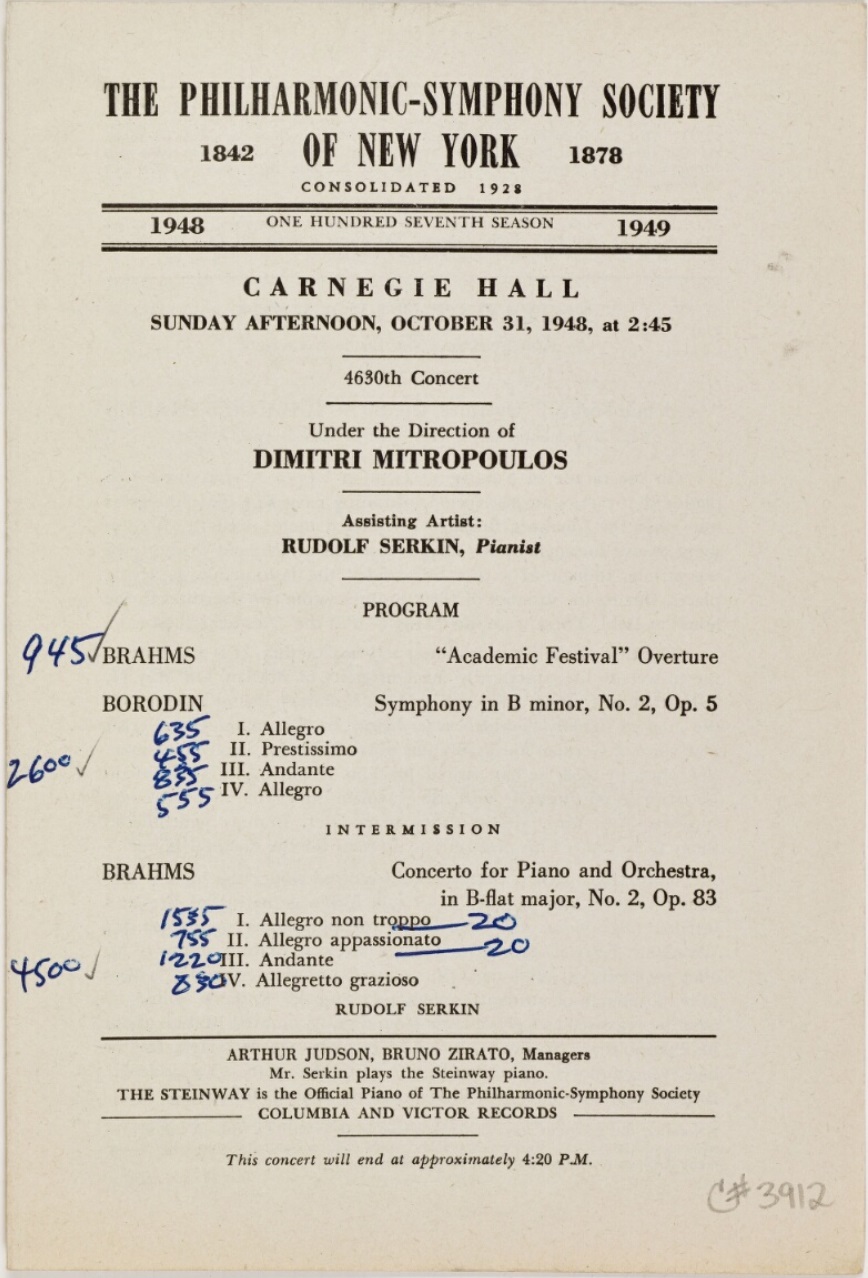

_________________
Between the Concert of February 20, 1936 (Beethoven Concerto n°4 Op.58 & Mozart Concerto n°27 K.595 with Arturo Toscanini) and the « Rudolf Serkin Golden Jubilee Program » of February 20, 1986 (Beethoven Concerto n°4 Op.58 with Zubin Mehta), Rudolf Serkin performed more than 110 times with the NYPO, including 27 Concerts (listed above) under the direction of Dimitri Mitropoulos, but no commercial recording with the latter ever materialized. This rare recording of Brahms’ Second Concerto n°2 (solo cellist: Leonard Rose) represents their first collaboration with the NYPO. The performance has a rare intensity, and for that matter, it is tempting to compare it with the well-known version with Edwin Fischer and Wilhelm Furtwängler, who of course play in a very different style.
(Recorded on 33rpm 16″ Transcription Discs later dubbed on magnetic tape).
_________________
Les liens de téléchargement sont dans le premier commentaire. The download links are in the first comment.
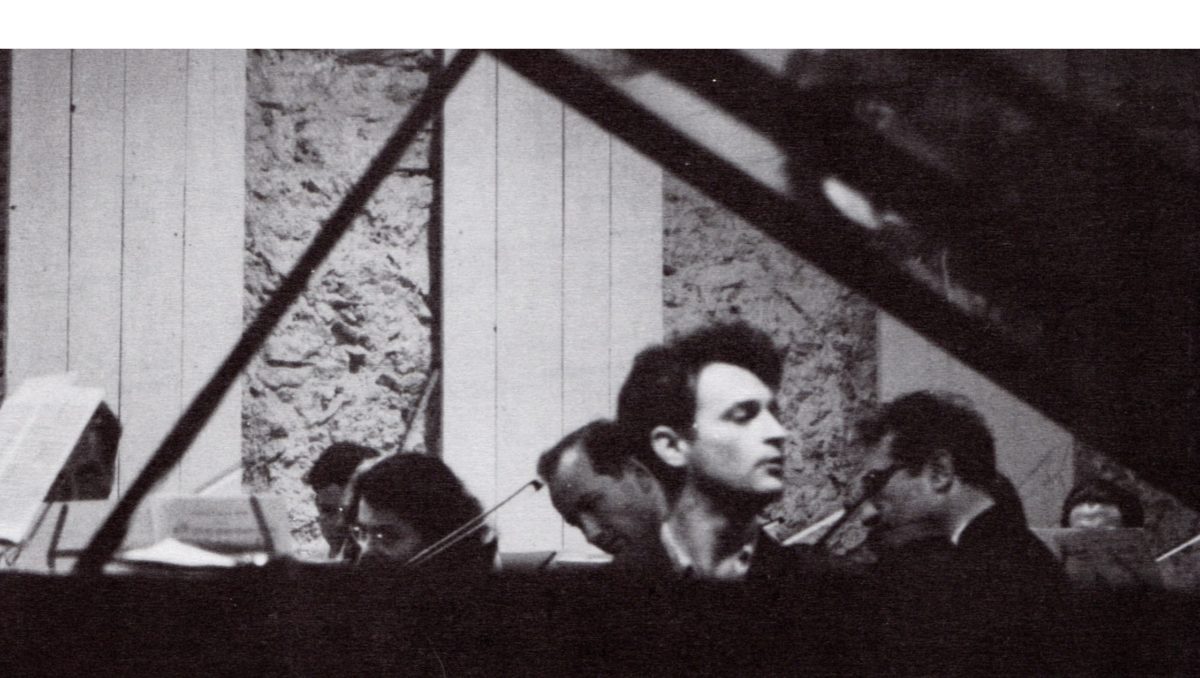
William Kapell – Dimitri Mitropoulos NYPO
Carnegie Hall – April 12 1953
Source: Bande/Tape 19 cm/s / 7.5 ips
La source utilisée jusqu’à présent pour les rééditions de cet enregistrement présente un spectre de fréquences tronqué dans l’aigu, ce qui se traduit par un son quelque peu étouffé qui empêche d’apprécier la splendeur sonore du piano de William Kapell (1922-1953), et aussi de l’orchestre.
La bande recopiée ici est en tout point supérieure et permet de restituer enfin cette grande interprétation que Kapell a donnée pour sa dernière apparition à New York avec un orchestre.

Pour sa dernière saison complète, Kapell a joué à travers les Etats-Unis un ambitieux programme de concertos, avec notamment trois apparitions à New-York, à savoir les 27 et 28 novembre 1952 (avec Dimitri Mitropoulos) pour le Concerto N°17 K. 453 de Mozart qu’il rejouera à Prades l’été suivant sous la direction de Pablo Casals, le 30 décembre 1952 pour le 3ème Concerto de Prokofiev avec le Philadelphia Orchestra (direction Alexander Hilsberg) et enfin les 11 et 12 avril 1953, pour le Concerto n°1 de Brahms, en lieu et place du 3ème Concerto de Prokofiev prévu initialement:

Après le concert du 1er décembre à Dallas avec le Concerto Op.15 de Brahms, le chef Walter Hendl lui a adressé une lettre dans laquelle il écrivait: « I have come to the conclusion that you are the great American pianist » (« J’en suis arrivé à la conclusion que vous êtes le grand pianiste américain »).
Les archives ont conservé des copies annotées des programmes des deux concerts des 11 et 12 avril 1953, et il y a de grandes différences de minutage: le 12, pour le concert radiodiffusé, les premier et deuxième mouvements durent chacun environ une minute de plus.
Nul doute que le pianiste et le chef ont modifié leur approche, probablement lors de la répétition pour le concert du dimanche, qui n’a pas le même programme que le précédent.
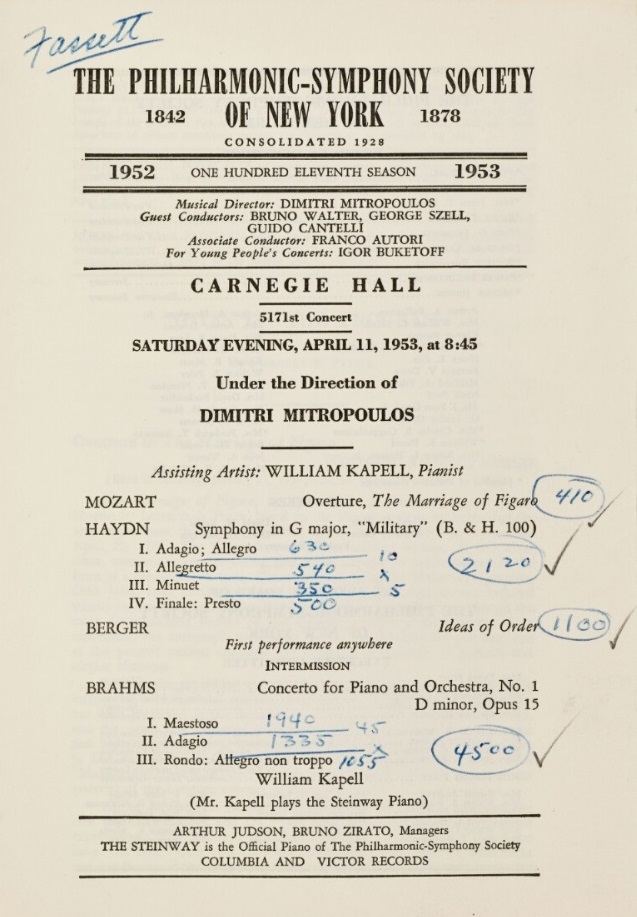

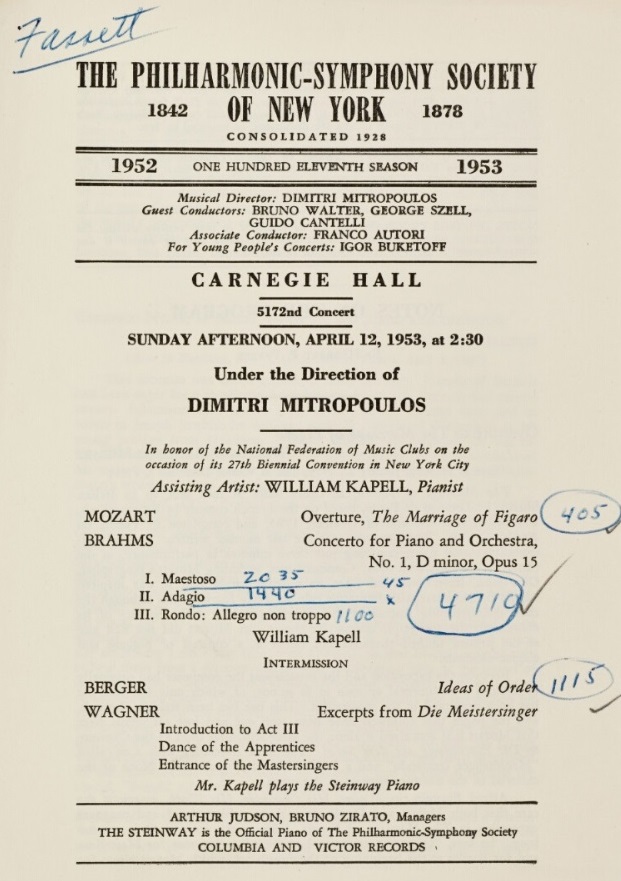
Bien sûr, un minutage différent n’est qu’une vague indication, mais fort heureusement, Harriett Johnson, critique du New York Post a assisté aux deux concerts et nous donne ainsi de précieux commentaires. Ainsi, lors du deuxième concert, l’interprétation était selon elle beaucoup plus détendue et de ce fait beaucoup plus éloquente. Dans ce contexte, elle pointe une tendance du pianiste à se laisser entraîner par sa propre intensité, d’où un excès de tension, une virtuosité trop marquée et une sonorité métallique. L’interprétation de l’Adagio est notée pour son intensité pénétrante, sa vitalité rayonnante et la beauté du phrasé. L’article du Musical Courier (May 1, 1953) va dans le même sens en soulignant, en ce qui concerne le premier concert, la chaleur rhapsodique de l’interprétation, mais aussi le tempo très rapide du premier mouvement, la grande virtuosité et un côté parfois plutôt percussif du jeu du pianiste.
Quoiqu’il en soit, avec ce concert radiodiffusé, nous disposons de la meilleure des deux prestations des interprètes, soliste et chef.
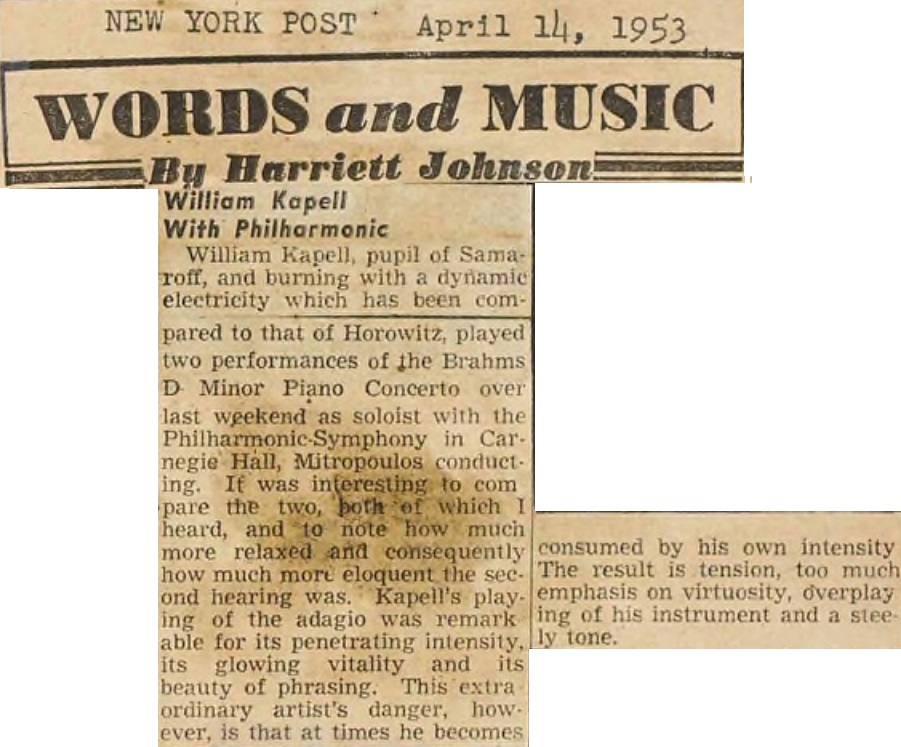

Musical Courier May 1, 1953 (critique du concert du 11 avril)
________________
The source that was used for the previous re-issues of this recording is truncated in the high frequencies, so that the sound is somewhat muffled which does not allow to appreciate the splendid piano sound of William Kapell (1922-1953), and also the orchestra.
The tape dubbed here is vastly superior and fully allows to hear the great performance given by Kapell for his last orchestral concert in New-York.
Fot his last complete season, Kapell performed through the United States an ambitious program of concertos, with no less than three programs in New York, namely on November 27 and 28, 1952 (with Dimitri Mitropoulos) for Mozart’s Concerto N°17 K. 453 he would later perform at the Prades Festival the following summer under the direction of Pablo Casals, on December 30, 1952 for Prokofiev’s Third Concerto with the Philadelphia Orchestra (conducted by Alexander Hilsberg) and to end with, on April 11 and 12, 1953 for Brahms’ First Concerto, instead of the previously scheduled Prokofiev’s Third Concerto.
After the December 1st, concert in Dallas with this Brahms Concerto, the conductor Walter Hendl sent him a letter in which he wrote « I have come to the conclusion that you are the great American pianist ».
The archives have kept annotated copies of the programs of both concerts of April 11 and 12, 1953, and there are major differences in timings: on the 12th, for the broadcast concert, each of the first and the second movements lasts about one full minute longer.
It is clear that both pianist and conductor have reconsidered their approach, probably during the rehearsal for the Sunday concert, whose program is different.
A different timing is of course merely a vague indication, but quite happily, Harriett Johnson, critic for the New York Post attended both concerts and provides us with precious comments. Indeed, at the second concert, the performance was for her much more relaxed and consequently much more eloquent. In this context, she points out the pianist’s tendency toward becoming consumed by his own intensity, the result being tension, too much emphasis on virtuosity, overplaying of the instrument and a steely tone. According to her, the performance of the Adagio was remarkable for its penetrating intensity, its glowing vitality and its beauty of phrasing. The article in the Musical Courier (May 1, 1953) goes in the same direction. It underlines, as far as the first concert is concerned, the rhapsodic warmth of the performance, but also the very fast tempo of the first movement, and the pianist’s great virtuosity and his sometimes rather percussive touch.
Be it as it may, with this broadcast concert, we have the best of the two performances, both for the soloist and the conductor.
Les liens de téléchargement sont dans le premier commentaire. The download links are in the first comment.
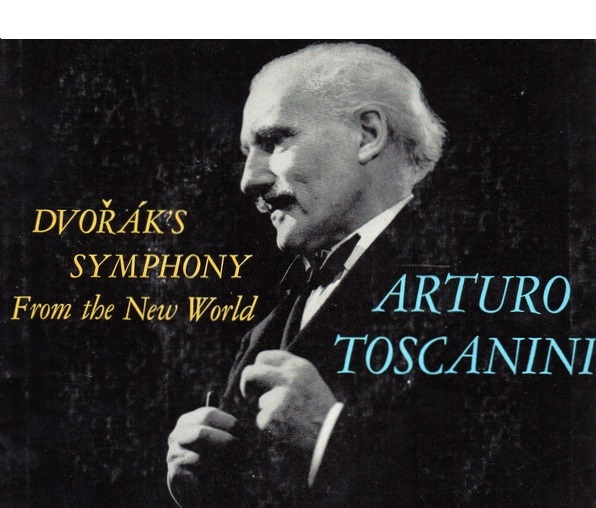
Arturo Toscanini – NBC SO
Enregistré à Carnegie Hall le 2 février 1953

Bande BC-7 (19cm/s 2 pistes) publiée en 1954
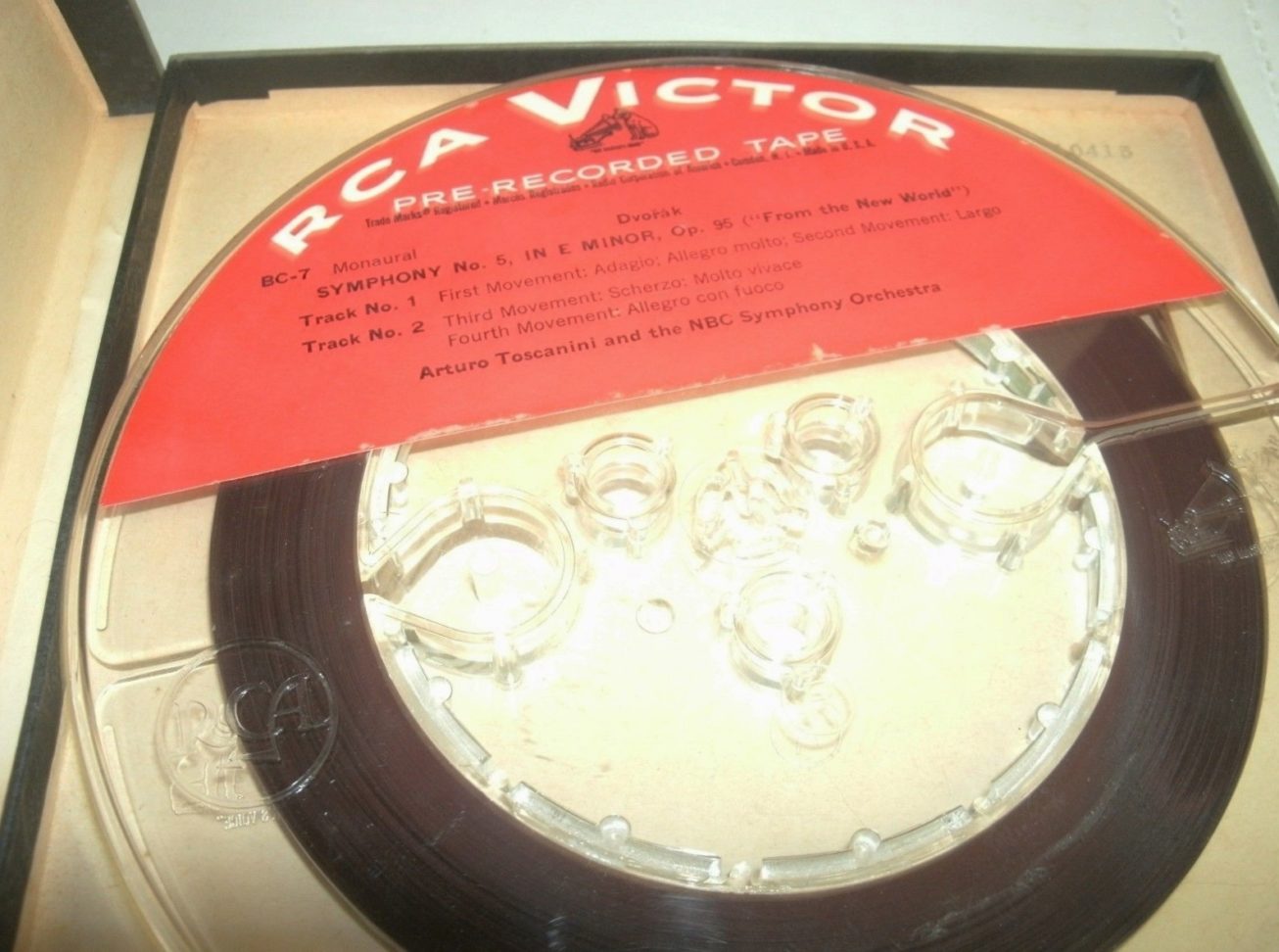
Presque 60 ans après la création de cette œuvre les 15 & 16 décembre 1893 sous la direction d’Anton Seidl (1850-1898) dans cette même salle alors dénommée « Music Hall 7th Avenue and 57th Street » avant de devenir le célèbre « Carnegie Hall », Toscanini, qui a dirigé l’oeuvre dès 1898, nous en laisse un témoignage qui reste un fleuron de ses dernières saisons à la tête du NBC Symphony Orchestra.
A partir de 1952, RCA a modifié sa technique d’enregistrement, du moins en ce qui concerne Toscanini. La captation a été réalisée avec un seul microphone positionné environ 5 mètres au dessus du chef, la même technique que celle déployée à l’époque par d’autres firmes telles que Mercury ou Westminster. Il en résulte une perspective sonore et une dynamique naturelles que l’on n’avait pas l’habitude d’entendre dans ses disques et qui sont magnifiées par l’édition sur bande (19 cm/s, 2 pistes), laquelle surclasse les publications en microsillon et en CD, en restituant des subtilités de phrasé et de rythme que l’on pensait n’exister que dans l’enregistrement du concert du 31 janvier précédant cet enregistrement.

Extrait du texte de présentation du 33t. LM-1778
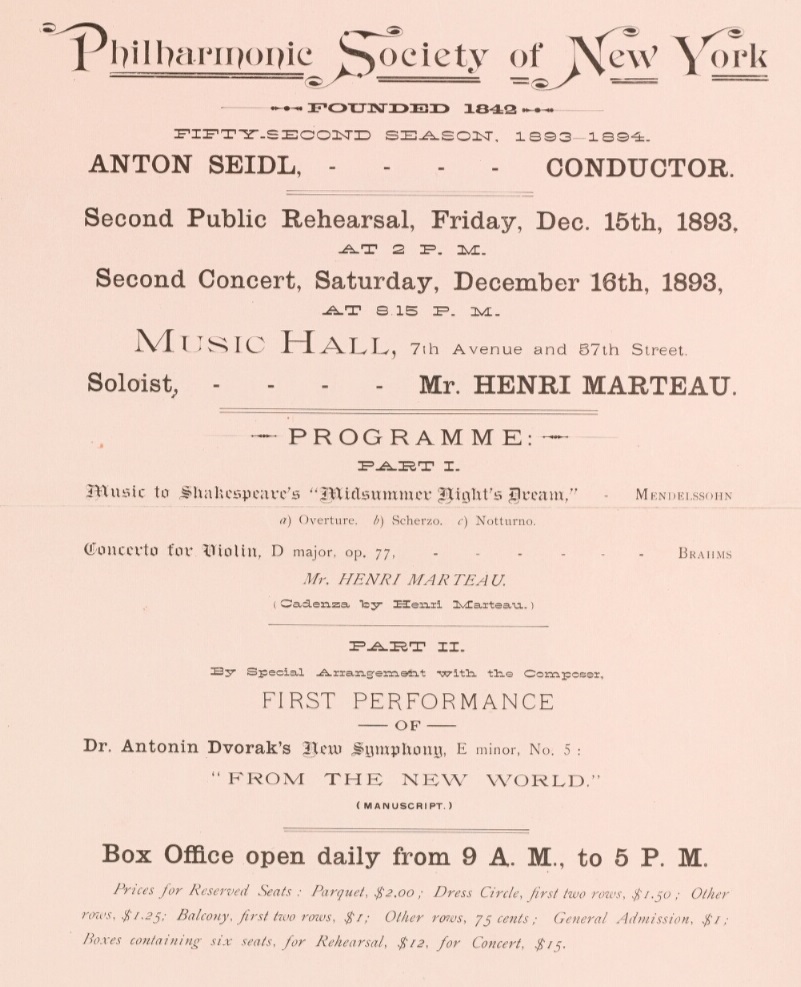
Nearly 60 years after the work was premiered on December 15 & 16 1893 under the direction of Anton Seidl (1850-1898) in the same Hall then called « Music Hall 7th Avenue and 57th Street » before it came universally known as the « Carnegie Hall », Toscanini, who performed the work as early as 1898, gives us a testimony which remains one of the main highlights of his last seasons with the NBC Symphony Orchestra.
As of 1952, RCA changed its recording technique, at least as far as Toscanini was concerned. This recording was made with a single microphone placed approximately 16 feet above the conductor’s head, namely the same technique as implemented then by companies like Mercury or Westminster. This accounts for a natural sound perspective and natural dynamics seldom heard before in his recordings and that are enhanced by the tape issue (7.5 ips; 2 tracks), which outdoes the LPs and CDs, unveiling subtilities of phrasing and of rhythm that were believed to exist only in the recording of the concert given shortly before on January 31.
___________________

___________________

___________________

___________________
Les liens de téléchargement sont dans le premier commentaire. The download links are in the first comment.

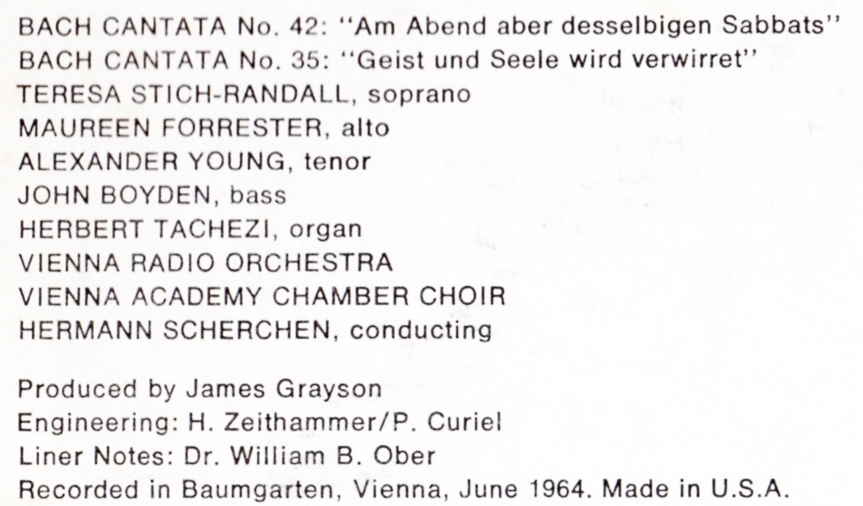
Enregistré en Juin 1964 à Vienne dans la Festsaal du Casino de Baumgarten
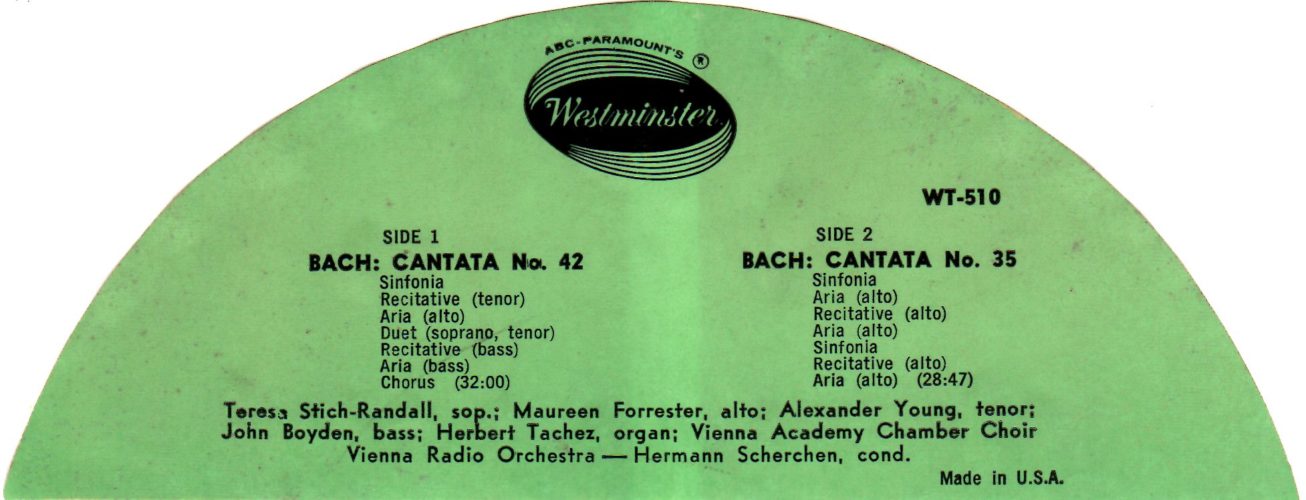
Bande 4 pistes 19 cm/s WT-510
Voici avec pour protagonistes principaux Maureen Forrester (1930-2010) et Hermann Scherchen (1891-1966) un enregistrement historique de deux Cantates de Bach BWV 35 « Geist und Seele wird verwirret » et BWV 42 « Am Abend aber desselbigen Sabbats ». Il n’est pas couramment disponible et la bande (WT-510) publiée à l’époque en constitue la meilleure source, apte à reproduire distinctement l’interprétation telle que captée en juin 1964 dans l’acoustique généreuse de la Festsaal du Casino de Baumgarten à Vienne.
Les autres interprètes sont la soprano américaine Teresa Stich-Randall (1927-2007), le ténor britannique Alexander Young (1920-2000), et la basse canadienne John Boyden (1935-1982). L’organiste autrichien Herbert Tachezi (1930-2016), qui venait juste d’intégrer le Concentus Musicus de Vienne, assure la partie d’orgue des deux Cantates, et en particulier l’importante partie solo de la Cantate BWV 35.
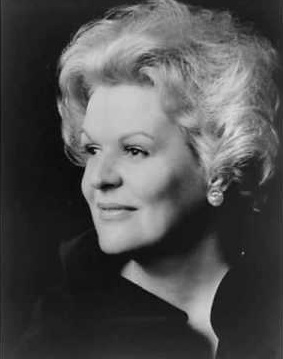
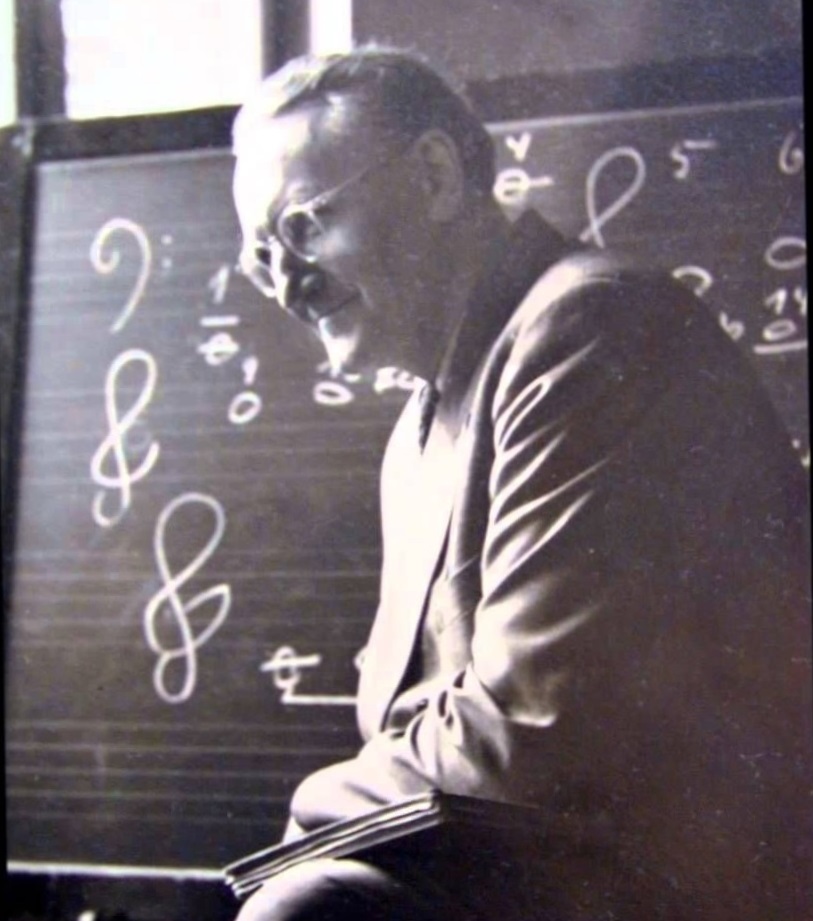
Here is, with as main performers Maureen Forrester (1930-2010) and Hermann Scherchen (1891-1966) an historical recording of two Bach Cantatas BWV 35 « Geist und Seele sind verwirret » and BWV 42 « Am Abend aber desselbigen Sabbats ». It is not readily available, and the tape (WT-510) that was then published is the best source, as it distinctly renders the interpretation as recorded in June 1964 in the opulent acoustics of the Festsaal of the Baumgarten Casino in Vienna.
The other interpreters are US soprano Teresa Stich-Randall (1927-2007), British tenor Alexander Young (1920-2000), and Canadian bass John Boyden (1935-1982). The Austrian organist Herbert Tachezi (1930-2016), who very recently joined the Concentus Musicus Wien, plays the organ part in both Cantatas, and especially the important solo part of the Cantata BWV 35.
Les liens de téléchargement sont dans le premier commentaire. The download links are in the first comment.
![]()

Enregistré à Brooklyn (St-George Hotel Ballroom) le 11 novembre 1957
Prise de son stéréophonique: Fred Plaut & Stan Tonkel
Source: Bande/Tape 19 cm/s / 7.5 ips LMB 19
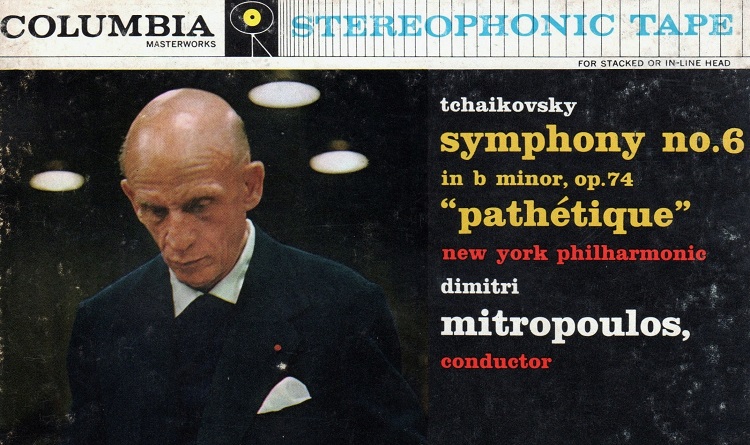
Cet enregistrement a été réalisé au cours d’une journée « marathon » au cours de laquelle, outre cette Symphonie, ont été enregistrés l’Hymne Américain (non publié), de larges extraits (45′) du ballet Roméo et Juliette de Prokofiev, la Marche Slave de Tchaïkovsky et « Une Nuit sur le Mont Chauve » de Moussorgsky, soit en tout environ 100 minutes de musique.
La Symphonie de Tchaïkovsky avait été donnée en concert par Mitropoulos le 12 octobre (étonnamment sa seule exécution de cette œuvre avec le NYPO), et les extraits du ballet de Prokofiev les 31 octobre et 1er novembre, une partie seulement d’entre eux étant repris lors du concert radiodiffusé du dimanche, le 3 novembre.
Cette journée d’enregistrements du lundi 11 novembre était inconfortablement située entre deux semaines de concerts dirigés par André Cluytens les jeudi 7, vendredi 8, samedi 9 et dimanche 10 novembre d’une part , et les jeudi 14, vendredi 15, samedi 16 et dimanche 17 novembre d’autre part avec des programmes complètement différents. Etant donné qu’il y a eu chaque semaine « comme c’était l’usage » (lettre du NYPO à Cluytens en date du 4 décembre 1956) quatre ou cinq répétitions (deux le mardi, une le mercredi, une le jeudi et « si nécessaire » une le samedi) pour préparer les concerts, on imagine aisément la charge de travail que ceci représentait pour l’orchestre, le lundi étant sa seule journée de repos.

Si les critiques américains n’ont pas manqué de louer la qualité exceptionnelle de la prise de son, en particulier pour la version sur bande (2 pistes 19 cm/s ref LMB 19), ils ont par contre été déroutés par l’interprétation dont l’incroyable tension et les couleurs orchestrales ne correspondait pas à leur conception, probablement influencée par le romantisme allemand, qui réclamait plus de « pathos », à une époque où des interprètes tels que Mravinsky n’étaient pas encore la référence.
Autrement dit, Mitropoulos était en avance sur son temps.
Peut-être aussi cette tension reflétait-elle la période difficile que traversait Mitropoulos, contraint de partager pour la saison 1957-1958 la direction de l’orchestre avec Leonard Bernstein. Il démissionnera juste après, la nouvelle étant annoncée par la presse le 20 novembre.
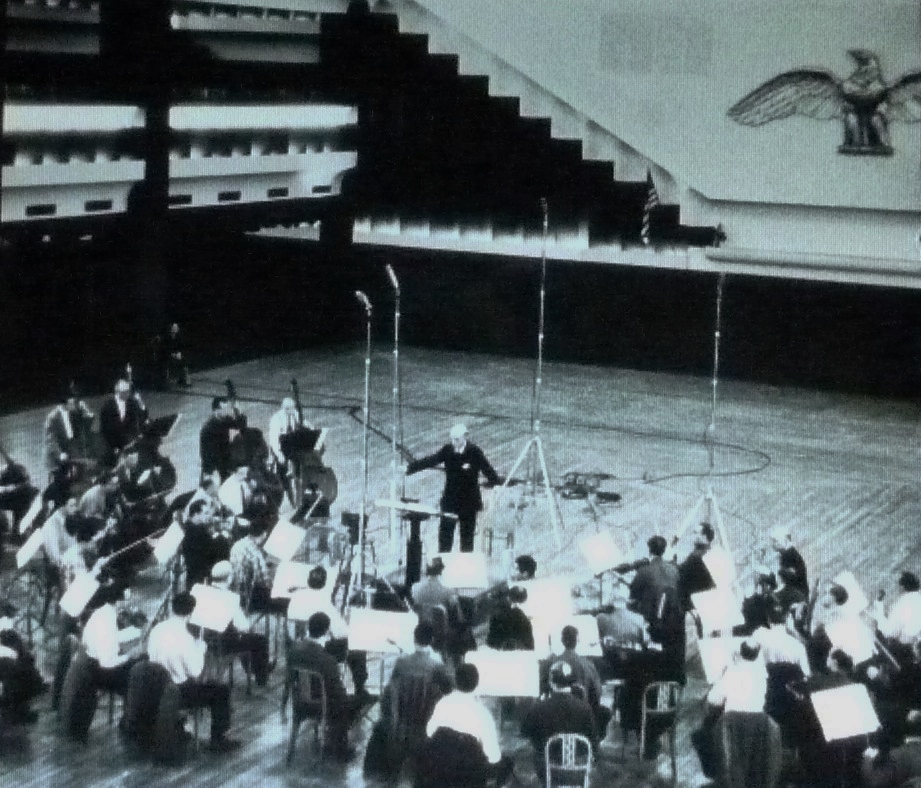
This recording was made during a one-day « marathon » during which, apart from this Symphony, were recorded « The Star Spangled Banner » (still unpublished), a large selection (45′) from Prokofiev’s Ballet Roméo and Juliet, the « Marche Slave » by Tchaïkovsky and « Night on Bald Mountain » by Moussorgsky, all in all about 100 minutes of music.
The Tchaïkovsky Symphony had been performed by Mitropoulos at the October 12 concert (astonishingly his only public performance of this work with the NYPO), and the excerpts from Prokofiev’s Ballet on October 31 and November 1st, only a part thereof being played at the Sunday broadcast of November 3.
But this recording day of Monday November 11 was squeezed between two weeks of November concerts conducted by André Cluytens on Thursday 7, Friday 8, Saturday 9 and Sunday 10 on the one hand, and on Thursday 14, Friday 15, Saturday 16 and Sunday 17 on the other hand with entirely different programs. Since there were each week as « customary » (letter from NYPO to Cluytens, dated December 4, 1956) four or five rehearsals (two on Tuesday, one on Wednesday, one on Thursday, and « whenever necessary » one on Saturday) to prepare the concerts, one can easily imagine the gruelling schedule this meant for the orchestra for which Monday was the only day-off.
The US critics did not fail to recognize the exceptionnal quality of the recording, especially in the reel-to-reel tape version (2 tracks 7.5 ips ref LMB 19). They seemed however to have been puzzled by the performance of which the incredible tension and the orchestral colours did not meet with their idea of the work, maybe out of the influence of German romanticism, that needed more « pathos », at a period when performers like Mravinsky were not yet a reference.
In other words, Mitropoulos was ahead of his time.
Maybe said tension reflected the difficult period Mitropoulos was going through, obliged as he was to share for the 1957-1958 season the leadership of the orchestra with Leonard Bernstein. He resigned shortly afterwards, and the news was announced in the press on November 20.
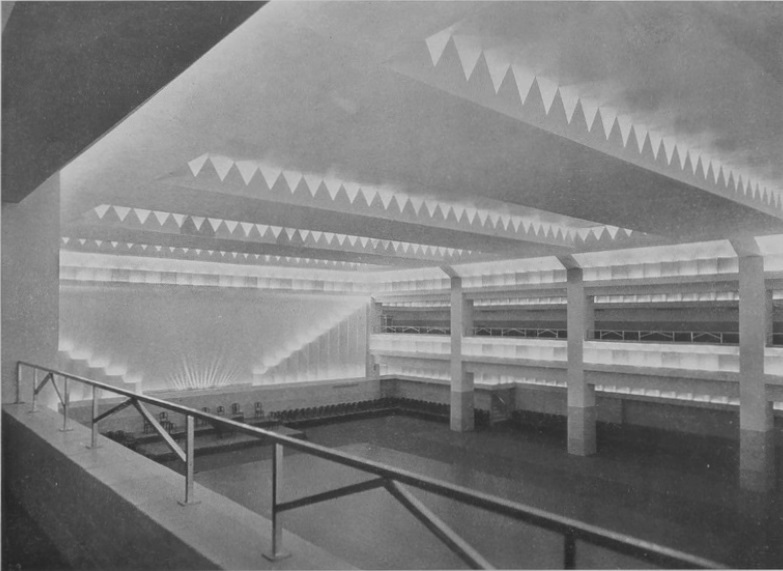
St. George Hotel Ballroom



